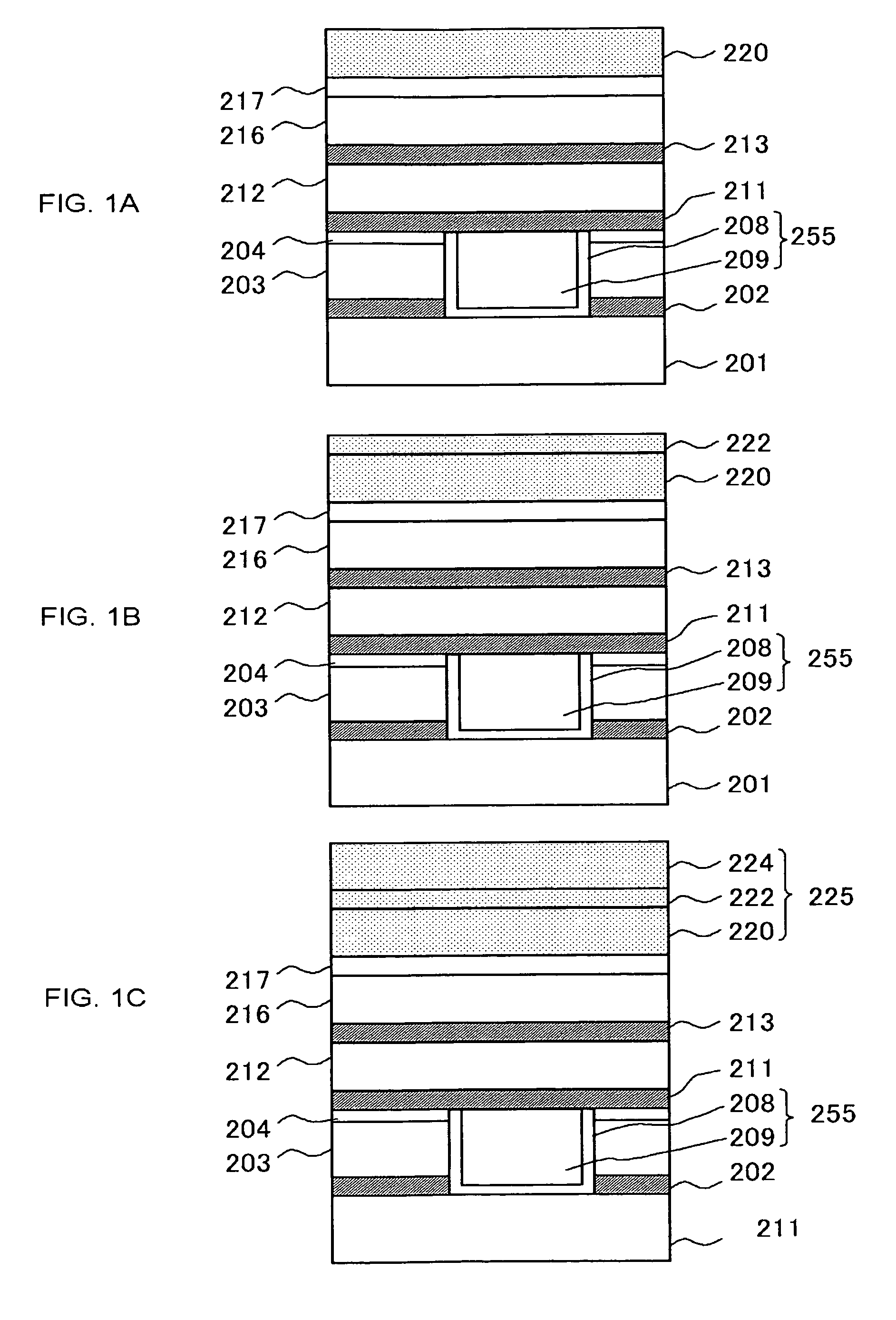Method of fabricating a semiconductor device
a semiconductor and film technology, applied in semiconductor/solid-state device manufacturing, basic electric elements, electric devices, etc., can solve the problems of easily destructing si—chsub>3/sub>bonds, easily destructing si—chsub>3/sub>bonds, and undesirably increasing the hygroscopicity of sog layers, so as to improve the wetting property of resist films and raise the etching resistance of intermediate films
- Summary
- Abstract
- Description
- Claims
- Application Information
AI Technical Summary
Benefits of technology
Problems solved by technology
Method used
Image
Examples
first embodiment
[0038]FIGS. 1A to 4L are step-wise sectional views showing procedures for fabricating a semiconductor device 200 according to the embodiment of the present invention.
[0039]This embodiment will describe an exemplary case where the present invention is applied to formation of a multi-layered wiring structure based on the dual-damascene process. The description herein will be made on a method of forming interconnects / wirings and vias by so-called, via-first process.
[0040]Procedures up to formation of a multi-layered wiring structure shown in FIG. 1A will be described. First, on an underlying insulating film 201 formed on a semiconductor substrate (not shown), an etching stopper film 202, a first interlayer dielectric film 203, and a first protective film 204 are sequentially stacked. The etching stopper film 202 is typically composed of a SiC film or a SiCN film.
[0041]The first interlayer dielectric film 203 can be configured using low-dielectric-constant materials such as polyhydrogen...
second embodiment
[0062]FIG. 5 and FIG. 6 are structural drawings respectively showing the semiconductor device 200 according to the embodiment of the present invention. Detailed structure of the lower layers under the three-layered resist film 235 herein is not shown, simply referring to as an object-to-be-etched 229.
[0063]As shown in FIG. 5, the three-layered resist film 235 may also be configured as having an anti-reflection film 244 between the third resist film 230 and the intermediate film 232. The anti-reflection film 244 herein may be configured typically using SiON or SiOC. For an exemplary case where the anti-reflection film 244 is configured using SiON, SiON can be formed using SiH4 and N2O gases at 200° C. or below in a parallel-plate-type plasma CVD apparatus. The anti-reflection film 244 is preferably formed in the same apparatus in which the intermediate film 232 is formed. Enrichment of the Si composition of the anti-reflection film 244 can increase the attenuation coefficient of ligh...
example 1
[0067]Structural changes in a TEOS-SiO2 film, a SiH4—SiO2 film, and a SOG film before and after ashing were investigated. The individual films were prepared as follows.
i) TEOS-SiO2 Film
[0068]A mixed gas of TEOS and O2 (ratio of flow rate of 1:10) was used as a film forming gas, and the film was formed by the two-frequency plasma CVD process at 200° C. under a reduced pressure of approximately 3 Torr. Output power was adjusted to approximately 100 W for the higher frequency (13.56 MHz), and at approximately 200 W for the lower frequency (approximately 500 kHz).
ii) SiH4—SiO2 Film
[0069]The film was formed by the CVD process at 200° C., using a mixed gas of SiH4 and N2O (ratio of flow rate of 1:20), under a reduced pressure of approximately 3 Torr.
iii) SOG Film
[0070]A chemical liquid of SOG was dropped through a coater, sintered at approximately 200° C. on a hot plate, to thereby form the film.
[0071]Three thus-prepared films were subjected to O2 ashing at approximately 250° C., and were...
PUM
 Login to View More
Login to View More Abstract
Description
Claims
Application Information
 Login to View More
Login to View More - R&D
- Intellectual Property
- Life Sciences
- Materials
- Tech Scout
- Unparalleled Data Quality
- Higher Quality Content
- 60% Fewer Hallucinations
Browse by: Latest US Patents, China's latest patents, Technical Efficacy Thesaurus, Application Domain, Technology Topic, Popular Technical Reports.
© 2025 PatSnap. All rights reserved.Legal|Privacy policy|Modern Slavery Act Transparency Statement|Sitemap|About US| Contact US: help@patsnap.com



